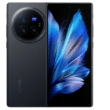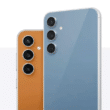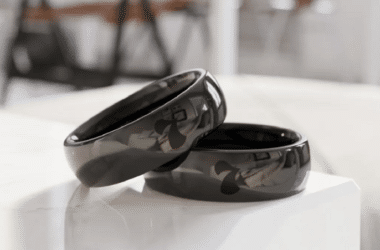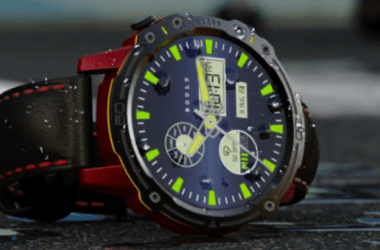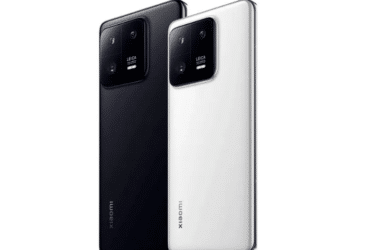The Dawn of a New Era in Smartphone Photography: OPPO’s HyperTone Camera System
In a bold move that signals the future of smartphone photography, OPPO, in collaboration with the iconic Hasselblad, has unveiled the HyperTone camera system. This revolutionary technology is not just a step but a leap forward, promising to redefine aesthetic standards in the industry. It’s a harmonious blend of hardware prowess and software intelligence aimed at delivering an unprecedented visual experience.
A Partnership Forging Photographic Excellence
The alliance between OPPO and Hasselblad is a testament to the relentless pursuit of perfection. The HyperTone camera system, borne out of this partnership, is set to debut in the eagerly anticipated OPPO Find X7 series, with the promise to extend to the OPPO Reno 11 and the OnePlus 12. But what does this mean for the everyday user and the enthusiast alike?
Decoding HyperTone Aesthetics
OPPO’s vision with HyperTone is clear: to provide an end-to-end solution that encapsulates the entire photographic journey from the click of the camera to the final display of the image. The essence of “Aesthetics” as referenced by OPPO is not just about how images look; it’s about how they feel to the viewer.
An Optical Odyssey: The Camera Optics
The heart of the HyperTone system lies in its ability to capture life as it unfolds, regardless of the time of day. OPPO assures that the camera optics will deliver images of the highest quality across all focal lengths.
Computational Photography Engine: A Symphony of Software and Hardware
Noise is the bane of digital photography, but OPPO’s HyperTone camera system is engineered to combat this with a 60 percent noise reduction and a 30 percent improvement in clarity. The camera’s brain, its computational photography engine, is supercharged to perform 400 percent more efficiently, all while ensuring colors are sampled and processed with precision, thanks to AI.
ProXDR Display: The Window to HyperTone’s Soul
A picture is only as good as the display it’s viewed on. The HyperTone ProXDR Display, with its staggering 12 million pixel brightness, offers up to eight times more dynamic range, ensuring that what you capture is what you see – real, vibrant, and full of life.
Hasselblad Effect: Artistry in Your Hands
The collaboration brings exclusive Hasselblad filters and photography modes to the OPPO camera app, including the Hasselblad Portrait Mode, designed for authentic skin tones and a natural look without over-smoothing or excessive brightening.
Bokeh Flare Portrait: Artistic Flair with a Tap
Another standout feature is the Bokeh Flare Portrait, which allows users to create optical out-of-focus effects that mimic professional-grade cameras, adding an artistic touch to your portraits.
OPPO Find X7 Series: A Sneak Peek
The upcoming OPPO Find X7 series is expected to feature a trifecta of 50MP sensors and a 32MP front camera, powered by MediaTek Dimensity and Snapdragon chipsets, and adorned with a 2K ProXDR display. This is not just a phone; it’s a photographic powerhouse.
Shaping the Future of Smartphone Photography
With HyperTone, OPPO isn’t just releasing a new technology; it’s crafting a new language in the realm of smartphone photography. It’s a language that speaks of richer colors, deeper contrasts, and a truer representation of the world around us.
From OPPO to the World: A Consumer’s Viewpoint
The expectations are high, and rightly so. HyperTone has the potential to shift consumer habits, setting new benchmarks and compelling users to demand more from their devices.
Beyond the Lens: A Comparative Analysis
In the fiercely competitive world of smartphone cameras, HyperTone sets OPPO apart, offering users a slice of photographic excellence that was once the sole domain of professional cameras.
In Conclusion: The HyperTone Revolution
HyperTone by OPPO is not just another feature; it’s a promise of a future where the line between smartphone photography and professional photography becomes indistinguishably blurred. It’s a future we’re eagerly looking forward to.
| Key Specs | Details |
|---|---|
| RAM | 8 GB |
| Processor | Qualcomm Snapdragon 8 Gen 3 |
| Rear Camera | 50 MP + 13 MP + 50 MP |
| Front Camera | 32 MP |
| Battery | 4500 mAh |
| Display | 6.55 inches (16.64 cm) |
| General | |
| Launch Date | November 23, 2023 (Unofficial) |
| Operating System | Android v12 |
| Performance | |
| Chipset | Qualcomm Snapdragon 8 Gen 3 |
| CPU | Octa-core (3.3 GHz, Single core, Cortex X4 + 3.2 GHz, Penta Core, Cortex A720 + 2.3 GHz, Dual core, Cortex A520) |
| Architecture | 64 bit |
| Fabrication | 4 nm |
| Graphics | Adreno 750 |
| RAM | 8 GB |
| Display | |
| Display Type | AMOLED |
| Screen Size | 6.55 inches (16.64 cm) |
| Resolution | 1080 x 2400 pixels |
| Aspect Ratio | 20:9 |
| Pixel Density | 402 ppi |
| Screen Protection | Corning Gorilla Glass, Glass Victus |
| Bezel-less display | Yes with punch-hole display |
| Touch Screen | Yes, Capacitive Touchscreen, Multi-touch |
| Refresh Rate | 120 Hz |
| Screen to Body Ratio | (claimed by the brand) 89% |
| Camera | |
| MAIN CAMERA | |
| Camera Setup | Triple |
| Resolution | 50 MP f/1.8 (Wide Angle, Primary), 13 MP f/2.4 (Telephoto), 50 MP f/2.2 (Ultra-Wide Angle) |
| Autofocus | Yes |
| Flash | Yes, LED Flash |
| Image Resolution | 8150 x 6150 Pixels |
| Settings | Exposure compensation, ISO control |
| Shooting Modes | Continuous Shooting, HDR |
| Camera Features | Digital Zoom, Auto Flash, Face detection, Touch to focus |
| Video Recording | 1920×1080 @ 30 fps |
| FRONT CAMERA | |
| Camera Setup | Single |
| Resolution | 32 MP f/2.4 (Wide Angle, Primary) |
| Video Recording | 1920×1080 @ 30 fps |
| Battery | |
| Capacity | 4500 mAh |
| Type | Li-Polymer |
| Removable | No |
| Quick Charging | Yes, Fast, 120W |
| USB Type-C | Yes |
| Storage | |
| Internal Memory | 256 GB |
| Expandable Memory | No |
| Network & Connectivity | |
| SIM Slot(s) | Dual SIM, GSM+GSM |
| SIM Size | SIM1: Nano, SIM2: Nano |
| Network Support | 5G Not Supported in India, 4G Supported in India, 3G, 2G |
| VoLTE | Yes |
| SIM 1 | 4G Bands: TD-LTE 2300(band 40) FD-LTE 1800(band 3) 3G Bands: UMTS 1900 / 2100 / 850 / 900 MHz 2G Bands: GSM 1800 / 1900 / 850 / 900 MHz GPRS: Available EDGE: Available |
| SIM 2 | Similar to SIM 1 |
| Wi-Fi | Yes, Wi-Fi 4 (802.11 b/g/n) |
| Wi-Fi Features | Mobile Hotspot |
| Bluetooth | Yes, v5.2 |
FAQs
1. When can we expect the OPPO Find X7 series to be released?
2. Will the HyperTone camera system be available in other OPPO models?
3. How does the Hasselblad Portrait Mode differ from regular portrait modes?
4. Can we expect the HyperTone technology to trickle down to mid-range smartphones?
5. Will the HyperTone system improve video recording capabilities as well?

